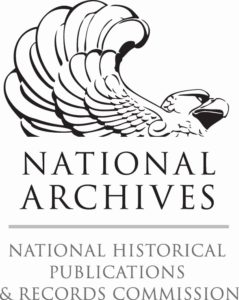Why Digitize?
We recommend asking the big question before you start any digital work: Why? What results do you want to see? How will this work advance your organization’s mission? How will it serve the needs of your community?
Goals for digitization projects might include:
- Improve internal access and intellectual control, such as by creating an inventory
- Improve public access to frequently-used items
- Improve public access to “hidden” or inaccessible items
- Reduce wear and tear on frequently-used items
- Protect fragile or at-risk items
- Generate revenue, such as by selling reproductions
- Showcase a representative sample of collection items
- Use in exhibits, presentations, or other programming
- Support teaching and research
Define a Digital Mission Statement
An organizational mission statement is a brief statement that communicates your organization’s purpose and reason for existing. Likewise, a digital mission statement articulates the purpose and goals of your organization’s digital work. This statement should be short (no more than a few sentences) and closely tied to your organization’s overarching mission. Starting with a strong digital mission statement will help others understand the value of your digitization program and how it fits in with the larger goals of your organization or community.
Prioritize Content for Digitization
Thoughtfully selecting the materials you’ll digitize will help keep your project manageable and help you make the best use of limited resources. Revisit your digital mission statement and make sure you select materials that will support your goals. For example, if your goal is to generate revenue by selling photo reproductions, choose items with broad appeal and without copyright or privacy concerns. If your goal is to create educational resources for local teachers, talk to them to find out what types of materials they need.
- Value: Is there interest or value in these materials for genealogists, educators, researchers, community members, or other identified audiences?
- Value: Do the materials contribute new voices or perspectives to the historical record (for example, materials document historically underrepresented groups in our community)?
- Information context: Is there enough information available to add useful context (we know or can find out names of people, locations, dates)?
- Availability: Are the materials unique and not already available online?
- Legal/Ethical issues: Are the materials in the public domain (or we can get permission from the copyright holder) and there are no privacy concerns or other barriers to putting them online?
- Condition: Are the materials in high-risk, deteriorating formats, particularly audiovisual recordings on media like audiocassettes, VHS tapes, CDs, or DVDs?
Audiovisual Collections Spotlight: Making an Inventory of AV Collections to Prioritize Digitization
By and large, digitizing an original resource does not replace the need for the proper conservation, care, and storage of that original resource. A big exception to that rule is audiovisual materials in outdated formats — digitization is considered the best way to preserve and play back these deteriorating resources. And the situation is urgent. In 2012, the Library of Congress National Recording Preservation Plan reported that “many endangered analog formats must be digitized within the next 15 or 20 years before further degradation makes preservation efforts all but impossible.”
If you have audio cassettes, reel-to-reel tapes, microcassettes, VHS, Betamax and U-Matic videotapes, Mini-DV, Hi8 or Digital8 camcorder tapes in your collections, consider making those your top priority.
But what if your AV materials are not cataloged or are no longer playable? How can you know what to prioritize if you don’t know what you have? Creating an item-level inventory of your AV collections is crucial to the process of digitizing such collections. Recollection Wisconsin has worked with the Community Archiving Workshop (CAW) and other partners to develop an audiovisual inventory form with accompanying instructions.
For Recollection Wisconsin Content Partners: Formats in Scope
Recollection Wisconsin welcomes digital collections representing a wide variety of original materials related to state and local history as well as national and international topics. If you’re planning to share your collection through Recollection Wisconsin, prioritize these formats:
In scope for Recollection Wisconsin:
- Visual images: photographs, slides, glass negatives, postcards, drawings, paintings, maps, blueprints, photo albums, scrapbooks
- Manuscripts: hand-written documents, including journals, letters, diaries, ledgers
- Printed text: books, yearbooks, city directories, articles, pamphlets, certificates, newsletters, reports
- Audio, video, and film: oral histories, speeches, recorded music, film footage
- Physical objects: three-dimensional artifacts, including sculptures, textiles, housewares, clothing, tools
Out of scope for Recollection Wisconsin:
- Data-only records: cemetery indexes, birth and death indexes
- Finding aids or EADs
- Institutional repository content: dissertations, research data
Resources and Tools
- “So You Think You Want to Digitize,” Wisconsin Historical Society, 2017.
- Christen, Kim, Jennifer O’Neal, and Lotus Norton-Wisla. “Strategic Digitization Goals Part 1: Digitization Purpose Statement Worksheet.” Sustainable Heritage Network, 2020.
- Selecting Materials for Scanning, North Carolina Digital Heritage Center.

 The Digital Readiness Toolkit and related resources were made possible in part by grants from the National Historical Publications and Records Commission.
The Digital Readiness Toolkit and related resources were made possible in part by grants from the National Historical Publications and Records Commission.
